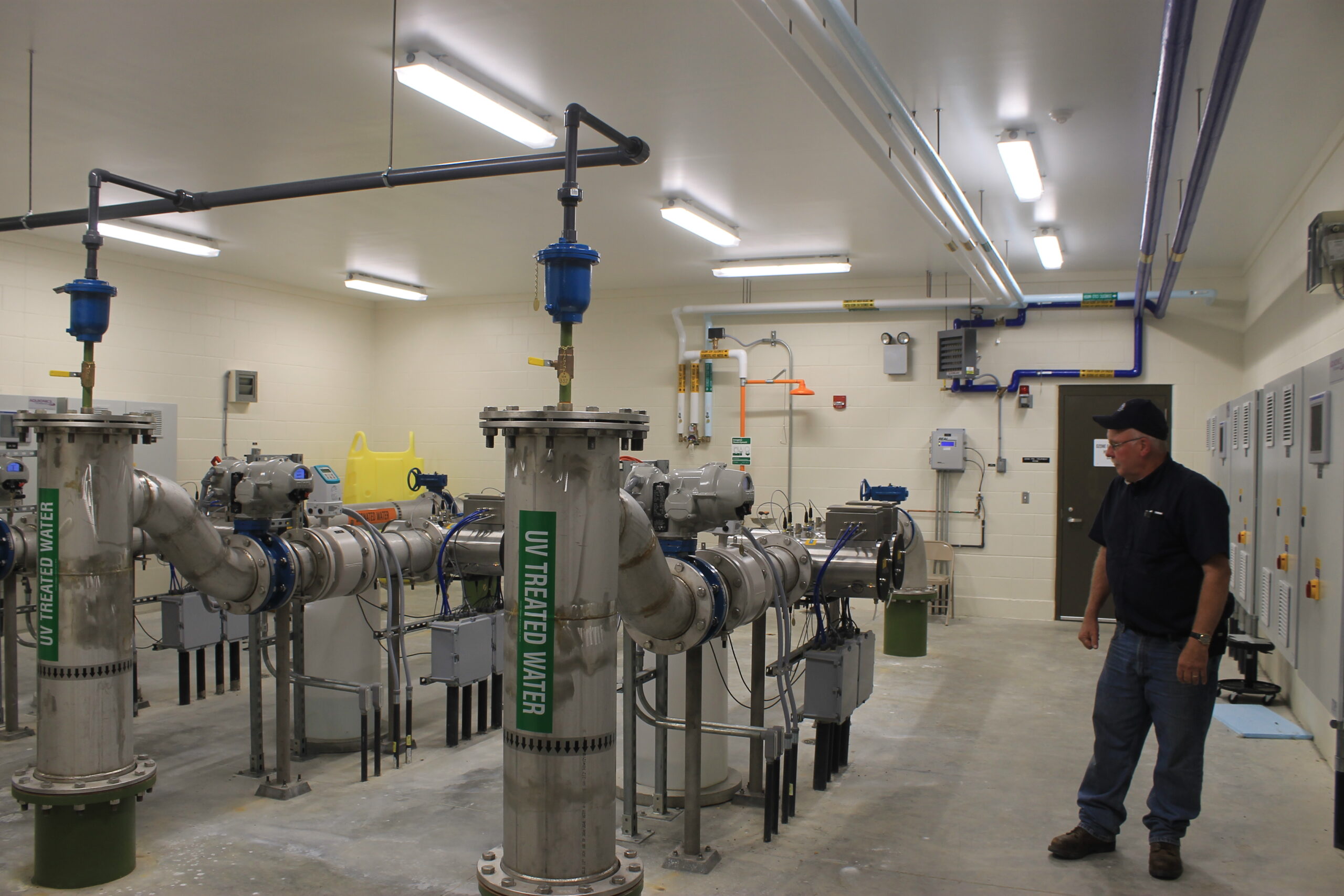
PRESQUE ISLE, Maine — For decades, many public drinking water systems in the United States have added fluoride to water, in what many health experts hail as a successful measure to prevent tooth decay.
On the front lines of drinking water utilities, though, managers and workers are not necessarily enthusiastic about working with fluoride — a naturally occurring mineral present in most groundwater that is nonetheless toxic in its concentrated form.
“We hate it,” said Frank Kearney, superintendent of the Presque Isle Utilities District, whose ratepayers originally voted to start fluoridation in the 1960s.
“We’d love to be without that stuff right there,” Kearney said on a recent tour of the district’s water treatment plant, pointing to a special room where fluoride is stored and added to the system.
“See the label on the bag: toxic. It looks like sugar or salt. We suit up when we go in that room and wear a full-face respirator,” Kearney said.
A byproduct of fertilizer manufacturing, the fluoride is not expensive and is available from a handful of predominantly Chinese companies. But Kearney said it is hazardous for workers to handle the toxic concentrated fluoride.
“Professionally, I’d love to see fluoride not added to the drinking water,” said Kearney, who has worked for multiple water utilities in the state. “The main reason is the worker safety issue. I don’t like exposing people to this day in and day out every year, in high concentrations.
Kearney is not himself a resident of in the public drinking water district but said he thinks it would be worthwhile for ratepayers in the Presque Isle Utilities District to have a conversation and referendum on the use of fluoride.
“If someone wanted to take a petition, we sure would support it,” Kearney said. “Medical people should weigh in. Worker safety should weigh in.”
Kearney said that about half of Maine’s public drinking water systems add fluoride to their water, as determined by local ratepayers.
In June 2016, voters in Machias voted to keep fluoride-treated drinking water, while in November, voters in the Kennebunk, Kennebunkport and Wells Water District opted to stop the practice.
The practice of fluoridation began in the 1950s, after researchers found that children growing up in areas with high, natural levels of fluoride experienced less cavities and tooth decay.
According to Dr. Peter Drews, president of the Maine Dental Association, fluoridated-water protects teeth in two ways.
“For children who are in the process of forming teeth, fluoride is ingested through food and water and literally becomes part of the tooth structure,” Drews wrote on his blog. Second, fluoride applied topically helps clean the teeth.
Currently, more than 200 million Americans live in communities with fluoridation and the practice is a safe and effective way to promote dental health, according to Drews and other medical experts.
The advent of fluoridation has been credited with helping drastically reduce the incidence of tooth decay in the U.S. since the 1950s. But the practice also has drawn skepticism from people who believe that fluoride in water can be associated with an array of adverse impacts, from lower IQ to bone diseases to over-ingestion of fluoride.
The anti-fluoridation group the Fluoride Action Network also points to data from the World Health Organization in arguing that fluoridation does not prevent tooth decay. Most of western Europe does not add fluoride to drinking water and their countries have seen the same declines in tooth decay, according the group.
Along with fluoridation of public drinking water, most people also use toothpaste with fluoridate — a possible contributor to the decline of tooth decay.
Frank Kearney thinks all of that information and more in the debate over fluoridation should be discussed by the nearly 6,000 people who get their drinking water from the Presque Isle Utilities District.
He also pointed out that many people do consume fluoridate in their water if it comes from groundwater, which has naturally-occurring fluoridate in most parts of the country.
“Even if we didn’t put any in here, our well has a background of 0.1 parts per million,” Kearney said. The standard target level for fluoridate when added to water is 0.7 milligrams per liter, or 0.7 parts per million.
“Fluoride doesn’t make the water better. Taking it out won’t make the water worse,” Kearney said. “It’s there strictly for a medical condition, tooth decay.”







